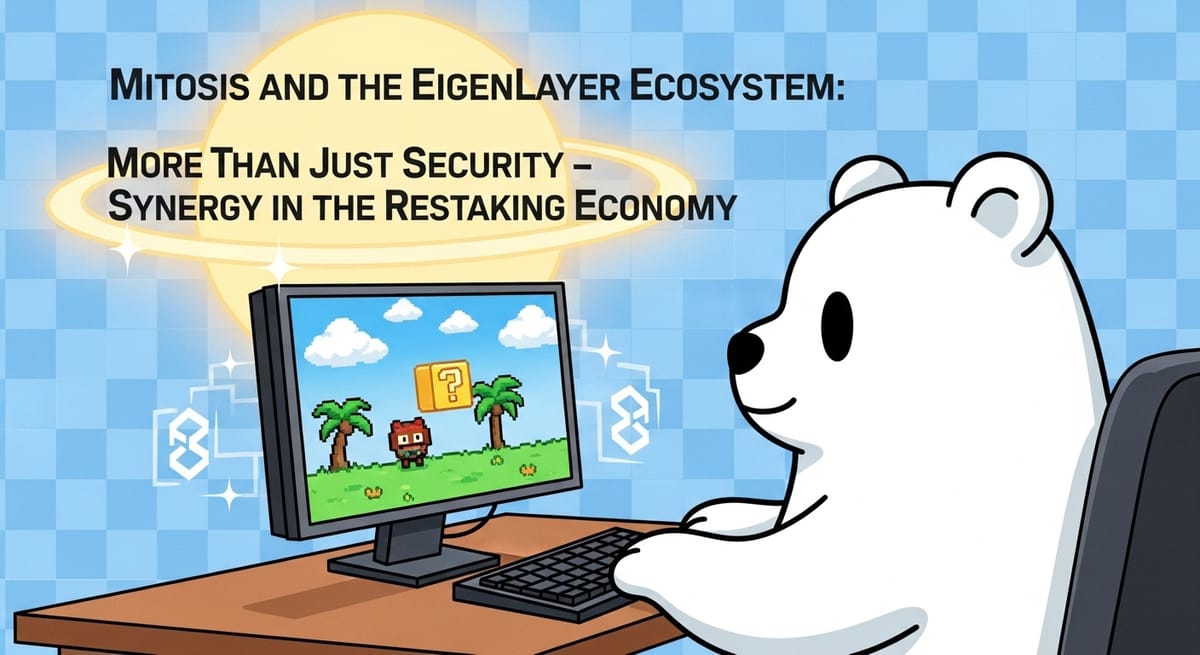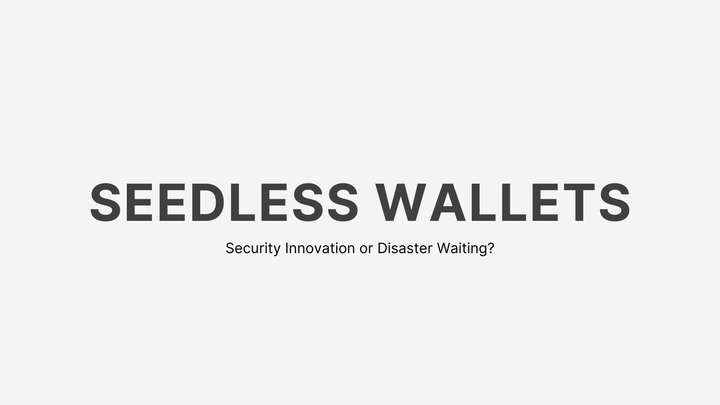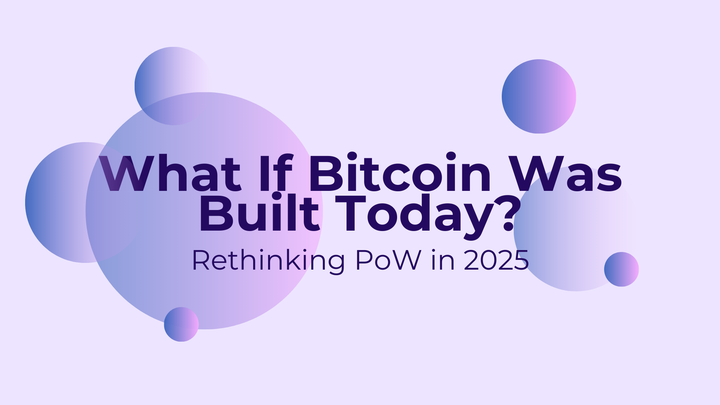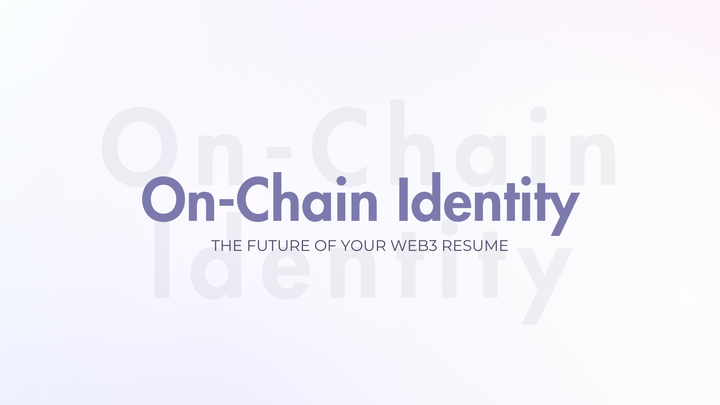Mitosis and the EigenLayer Ecosystem: More Than Just Security – Synergy in the Restaking Economy

1. Introduction: EigenLayer – A New Foundation for Innovation in Web3
The EigenLayer protocol has sparked a true revolution in the architecture of Ethereum and Web3 as a whole. Its key innovation – restaking – has enabled projects to "rent" the cryptoeconomic security of the main Ethereum network. Instead of building their own costly and less reliable validator systems from scratch, new protocols can leverage the existing, multi-billion dollar ETH stake to secure their operations.
The systems that use this borrowed security are called Actively Validated Services (AVS). These can be oracles, data availability layers, decentralized sequencers, and, of course, interoperability protocols.
Until now, we have primarily viewed Mitosis as a consumer of this service. Mitosis integrates an AVS to verify its cross-chain messages, which is a huge step forward compared to traditional bridges and provides the highest level of security for users. This is a clear and powerful use case.
But what if we look at this synergy more deeply? What if Mitosis is not just a customer in EigenLayer's "security store," but a potential key partner and active participant in this new, rapidly developing restaking economy?
Beyond Simply Consuming Security
The relationship between Mitosis and EigenLayer could be much more symbiotic and bidirectional. Mitosis, as a protocol that operates with vast amounts of liquidity and processes critically important cross-chain transactions, holds immense value itself and can offer unique opportunities within the EigenLayer ecosystem.
This leads us to several key questions:
- Could Mitosis itself become an important AVS, attracting restakers and generating additional revenue?
- How can Mitosis interact with other AVS to increase its efficiency and create new products?
- How does this deep integration position Mitosis in the future Web3 landscape, where the restaking economy is likely to play a central role?
The Goal of This Article: Exploring Deep Synergy
In this article, we will go beyond the simple understanding of Mitosis as a "protocol that uses AVS." We will explore the potential for a much deeper, two-way integration with the EigenLayer ecosystem. We will examine:
- Mitosis as a Potential AVS: What functions of Mitosis could be spun off into a separate Actively Validated Service, and what advantages would this bring?
- Mitosis and AVS Composability: How can Mitosis interact with other services on EigenLayer (e.g., data availability layers) to create more powerful and efficient solutions.
- Strategic Positioning: How this synergy transforms Mitosis from a liquidity protocol into a central hub at the intersection of the restaking economy and multichain interactions.
We will show that the connection between Mitosis and EigenLayer is not just a technical detail, but a strategic alliance that could define the future development of both projects and the entire Web3 infrastructure.
2. The Symbiosis of Mitosis and EigenLayer: From Consumer to Partner
The deep integration of Mitosis into the EigenLayer ecosystem can occur in two key directions: transforming Mitosis itself into an AVS and interacting with other AVSs to increase efficiency.
1. Mitosis as an Actively Validated Service (AVS)
Instead of just using a third-party AVS for general message verification, Mitosis could develop and launch its own specialized AVS. What tasks could it perform?
- AVS for Liquidity State Verification: This AVS could specialize in checking and attesting to the states of EOL pools across different networks. The operators of this AVS (ETH restakers) would be economically responsible for providing correct information about balances and available liquidity. This would allow other protocols and users to query Mitosis liquidity data with a high degree of confidence.
- AVS for Cross-Chain Transaction Execution: A more complex scenario where the AVS not only validates messages but also participates in coordinating transaction execution. For example, AVS operators could be responsible for initiating transactions on the destination chain after receiving a confirmed message, providing another layer of reliability and fault tolerance.
What are the advantages?
- For Mitosis:
- Additional Revenue: Mitosis could charge a fee for using its AVS (e.g., from dApps that rely on it), with a portion going to reward restakers and another portion to the EOL treasury.
- Attracting Capital and Attention: Launching its own AVS would attract the attention of restakers looking for new sources of yield and increase the amount of capital economically securing the Mitosis ecosystem.
- Enhanced Security and Customization: Its own AVS allows "tuning" the validation logic to the unique needs of a liquidity management protocol, rather than using a one-size-fits-all solution.
- For the EigenLayer Ecosystem:
- The emergence of a new, in-demand, and critically important AVS increases the value of the entire EigenLayer platform, giving restakers more choice and yield opportunities.
2. AVS Composability: Mitosis + Other EigenLayer Services
The EigenLayer ecosystem is not just a collection of isolated AVSs. Its real power lies in their composability, i.e., their ability to interact with each other. Mitosis can leverage this to significantly enhance its architecture.
- Interaction with Data Availability (DA) Layers:
- Scenario: For cross-chain transfers, certain data needs to be published on the mainnet, which can be expensive. Mitosis could use an AVS specializing in data availability (like EigenDA) for cheaper and more efficient storage and verification of transaction data.
- Result: Reduced cost of cross-chain operations for end-users.
- Interaction with Decentralized Sequencers:
- Scenario: If Mitosis Chain (the future L1) uses a decentralized sequencer built as an AVS on EigenLayer, it would increase its fault tolerance, decentralization, and censorship resistance.
- Result: A more reliable and decentralized base infrastructure for Mitosis Chain.
- Interaction with AVS-Based Oracles:
- Scenario: To manage the EOL treasury and assess risks, Mitosis needs reliable and secure price feeds. Using oracles whose security is also backed by restaked ETH would create a unified high standard of security for all system components.
- Result: Reduced risks in managing treasury assets.
3. Strategic Positioning in the New Economy
This deep, two-way synergy transforms Mitosis from a simple liquidity protocol into a central hub at the intersection of two Web3 mega-trends: multichain interoperability and the restaking economy.
- Mitosis becomes a bridge not only between blockchains but also between the capital locked in Ethereum staking and the needs of multichain applications. It gives ETH restakers a new opportunity for yield, and it gives multichain applications access to unified liquidity secured by that capital.
- Strengthening Network Effects: The more dApps and networks use Mitosis, the more value it provides as a potential AVS. The more restakers join the Mitosis AVS, the more secure and attractive the protocol itself becomes. A powerful positive feedback loop emerges.
Conclusion: Mitosis as an Integral Part of the EigenLayer Ecosystem
Viewing Mitosis in the context of the EigenLayer ecosystem reveals it from a new, much more powerful perspective. It's not just about using a ready-made security solution. It's a strategic integration that allows Mitosis not only to consume but also to generate value within the new restaking economy.
By becoming a potential Actively Validated Service and leveraging the composability of other AVSs, Mitosis can build an even more secure, efficient, and economically sustainable system. This symbiosis strengthens both Mitosis and EigenLayer, demonstrating how cutting-edge infrastructure protocols can interact to create the foundation for the next generation of decentralized applications.
The future of Mitosis will likely be inextricably linked to the future of the restaking economy. And the deeper this synergy becomes, the more central and indispensable a role Mitosis will play in the multichain world.
Learn more about Mitosis:
- Explore details on the official website: https://www.mitosis.org/
- Follow announcements on Twitter: https://twitter.com/MitosisOrg
- Participate in discussions on Discord: https://discord.com/invite/mitosis
- Read articles and updates on Medium: https://medium.com/mitosisorg
- Blog: https://blog.mitosis.org/



Comments ()